
How to Use stepdown type c: Examples, Pinouts, and Specs
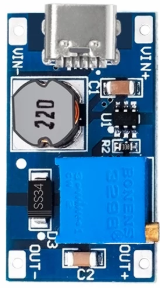
 Design with stepdown type c in Cirkit Designer
Design with stepdown type c in Cirkit DesignerIntroduction
A step-down converter, also known as a buck converter, is a DC-DC converter that steps down voltage while stepping up current. Manufactured by "A" with the part ID "A," this component efficiently converts a higher input voltage to a lower output voltage. It is widely used in applications requiring lower voltage levels from a higher voltage source.
Explore Projects Built with stepdown type c
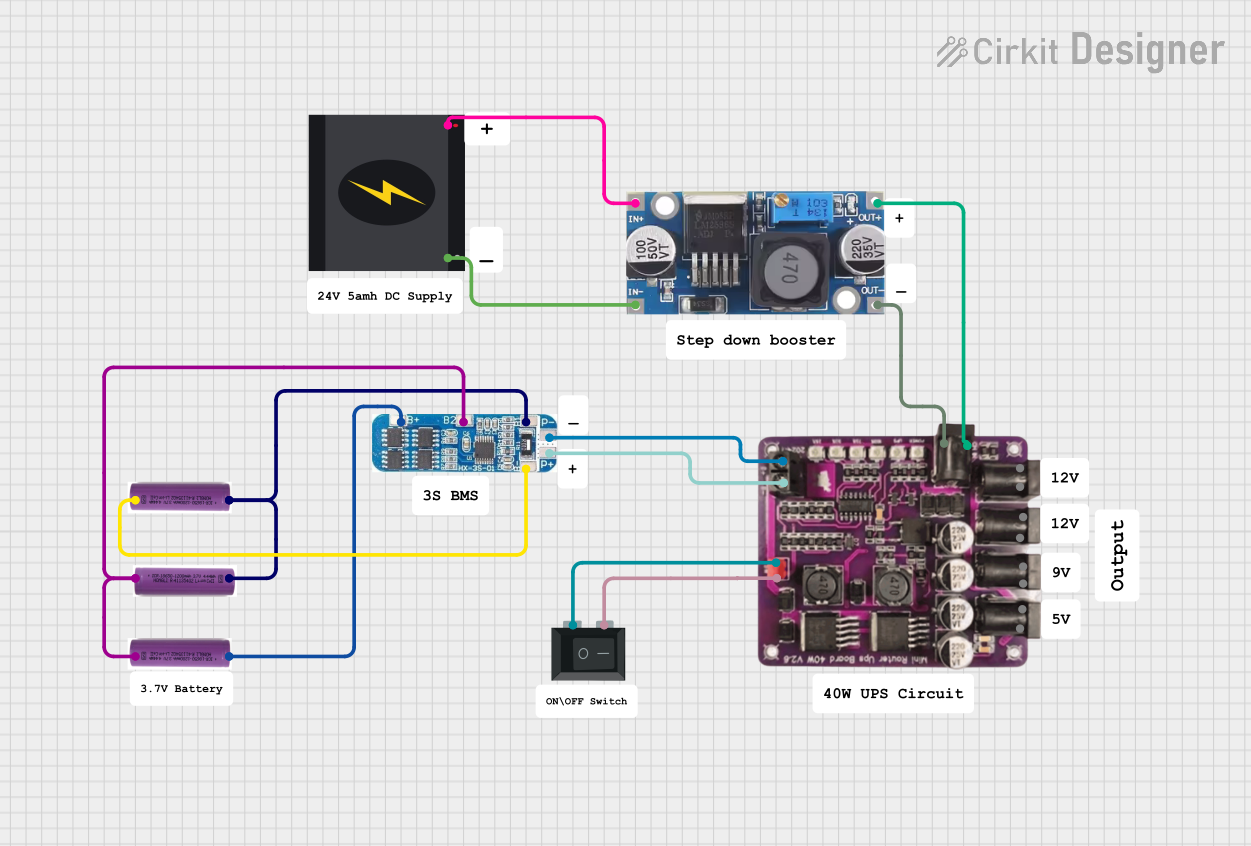
 Open Project in Cirkit Designer
Open Project in Cirkit Designer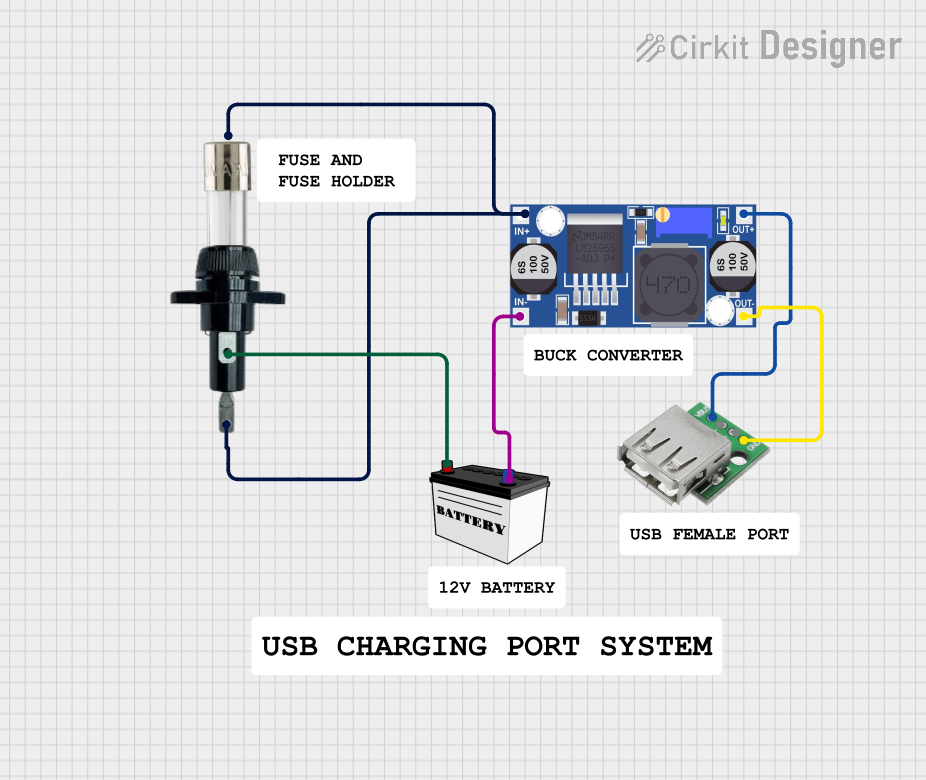
 Open Project in Cirkit Designer
Open Project in Cirkit Designer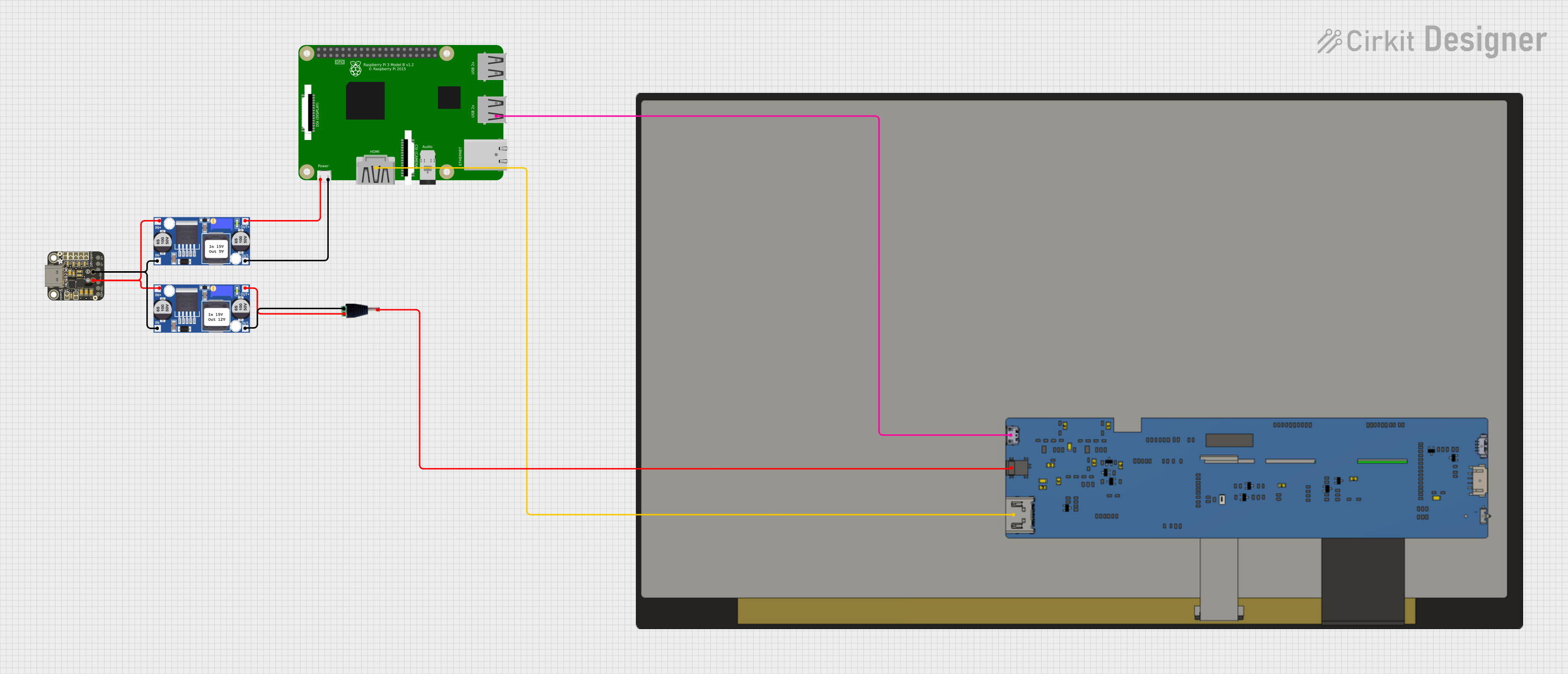
 Open Project in Cirkit Designer
Open Project in Cirkit Designer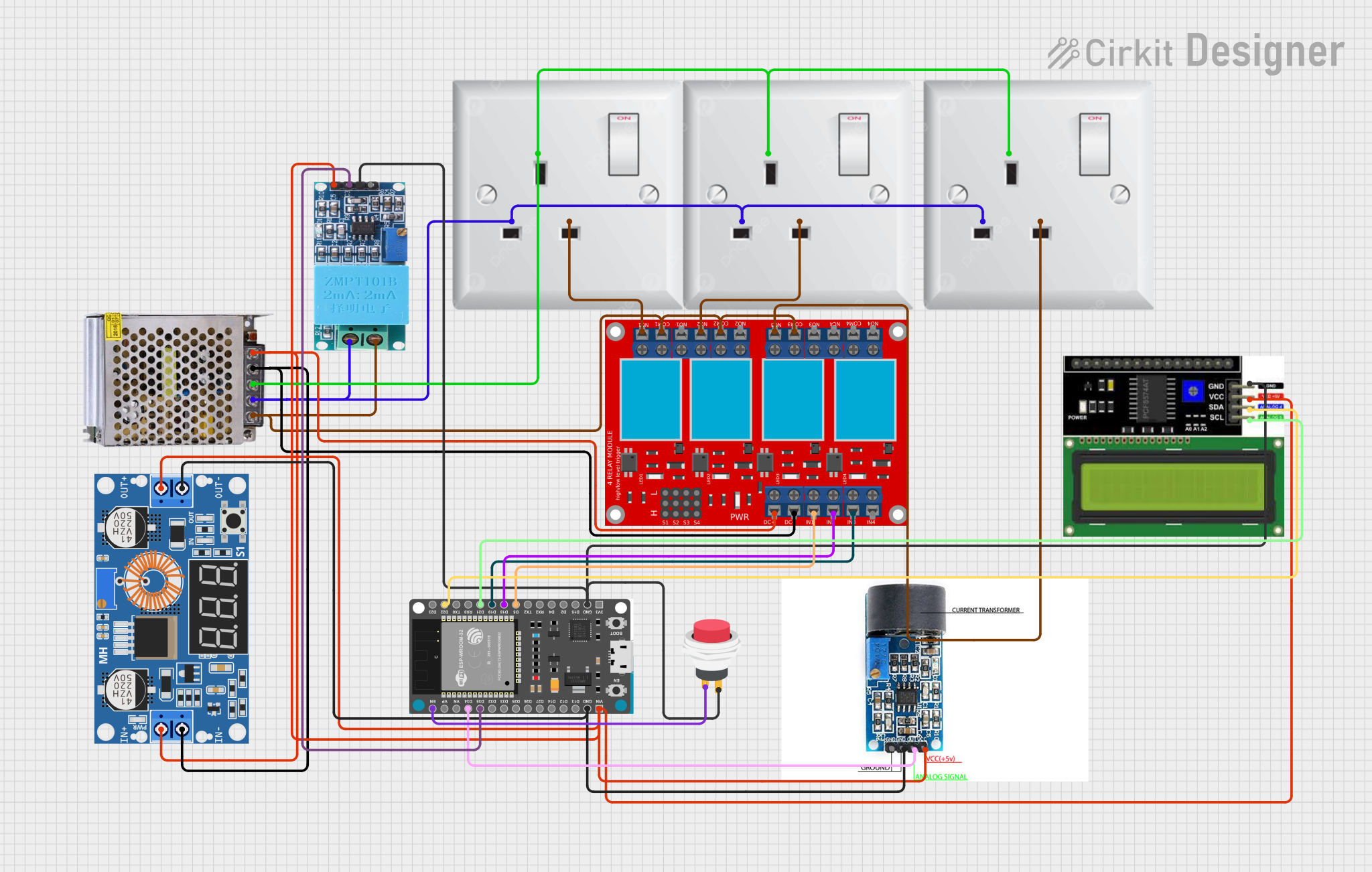
 Open Project in Cirkit Designer
Open Project in Cirkit DesignerExplore Projects Built with stepdown type c

 Open Project in Cirkit Designer
Open Project in Cirkit Designer
 Open Project in Cirkit Designer
Open Project in Cirkit Designer
 Open Project in Cirkit Designer
Open Project in Cirkit Designer
 Open Project in Cirkit Designer
Open Project in Cirkit DesignerCommon Applications and Use Cases
- Powering low-voltage devices (e.g., microcontrollers, sensors) from higher voltage sources
- Battery-powered systems to regulate voltage levels
- USB Type-C power delivery systems
- LED drivers and portable electronics
- Industrial and automotive applications
Technical Specifications
Key Technical Details
- Input Voltage Range: 5V to 24V DC
- Output Voltage Range: 1.2V to 12V DC (adjustable via potentiometer)
- Maximum Output Current: 3A
- Efficiency: Up to 95% (depending on input/output voltage and load)
- Switching Frequency: 150 kHz
- Operating Temperature: -40°C to 85°C
- Dimensions: 22mm x 17mm x 4mm
Pin Configuration and Descriptions
The Stepdown Type C module typically has the following pin configuration:
| Pin Name | Description |
|---|---|
| VIN | Positive input voltage terminal (connect to the higher voltage source). |
| GND | Ground terminal (common ground for input and output). |
| VOUT | Positive output voltage terminal (connect to the load). |
| ADJ | Adjustment pin (used to set the output voltage via an onboard potentiometer). |
Usage Instructions
How to Use the Component in a Circuit
- Connect the Input Voltage:
- Connect the VIN pin to the positive terminal of the input voltage source (e.g., a 12V DC power supply).
- Connect the GND pin to the ground of the input voltage source.
- Set the Output Voltage:
- Use the onboard potentiometer to adjust the output voltage. Turn the potentiometer clockwise to increase the output voltage and counterclockwise to decrease it.
- Measure the output voltage across the VOUT and GND pins using a multimeter to ensure it matches your desired value.
- Connect the Load:
- Connect the VOUT pin to the positive terminal of your load (e.g., a microcontroller or LED).
- Connect the GND pin to the ground of your load.
- Power On:
- Turn on the input power supply. The module will step down the input voltage to the desired output voltage.
Important Considerations and Best Practices
- Input Voltage: Ensure the input voltage is within the specified range (5V to 24V DC). Exceeding this range may damage the module.
- Output Current: Do not exceed the maximum output current of 3A. Use a heatsink or active cooling if operating near the maximum current for extended periods.
- Voltage Adjustment: Always measure the output voltage with a multimeter after adjusting the potentiometer to avoid overvoltage to your load.
- Polarity: Double-check the polarity of your connections. Reversing the input or output connections can damage the module.
- Filtering: For sensitive applications, consider adding input and output capacitors to reduce noise and improve stability.
Example: Using with an Arduino UNO
The Stepdown Type C module can be used to power an Arduino UNO from a 12V DC source. Here's how to connect it:
- Connect the VIN pin of the module to the 12V DC power supply.
- Connect the GND pin of the module to the ground of the power supply.
- Adjust the output voltage to 5V using the potentiometer.
- Connect the VOUT pin of the module to the 5V pin of the Arduino UNO.
- Connect the GND pin of the module to the GND pin of the Arduino UNO.
Here is an example Arduino code to blink an LED, powered by the Stepdown Type C module:
// This code blinks an LED connected to pin 13 of the Arduino UNO.
// Ensure the Arduino is powered by the Stepdown Type C module set to 5V.
void setup() {
pinMode(13, OUTPUT); // Set pin 13 as an output pin
}
void loop() {
digitalWrite(13, HIGH); // Turn the LED on
delay(1000); // Wait for 1 second
digitalWrite(13, LOW); // Turn the LED off
delay(1000); // Wait for 1 second
}
Troubleshooting and FAQs
Common Issues and Solutions
| Issue | Possible Cause | Solution |
|---|---|---|
| No output voltage | Incorrect wiring or loose connections | Double-check all connections and ensure proper polarity. |
| Output voltage is unstable | Insufficient input voltage or noisy power source | Use a stable power supply and add input/output capacitors for filtering. |
| Output voltage does not match adjustment | Potentiometer not properly adjusted or damaged | Re-adjust the potentiometer and measure the output voltage with a multimeter. |
| Module overheats | Exceeding maximum current or poor ventilation | Reduce the load current or add a heatsink/active cooling. |
FAQs
Can I use this module with a USB Type-C power source?
- Yes, as long as the input voltage is within the 5V to 24V range.
What happens if I exceed the maximum input voltage?
- Exceeding the input voltage range may permanently damage the module.
Can I use this module to charge batteries?
- Yes, but ensure the output voltage and current are suitable for the battery type and follow proper charging guidelines.
Is the output voltage regulated?
- Yes, the module provides a stable output voltage as long as the input voltage and load are within the specified range.
Can I use this module for audio applications?
- Yes, but consider adding additional filtering capacitors to minimize noise.